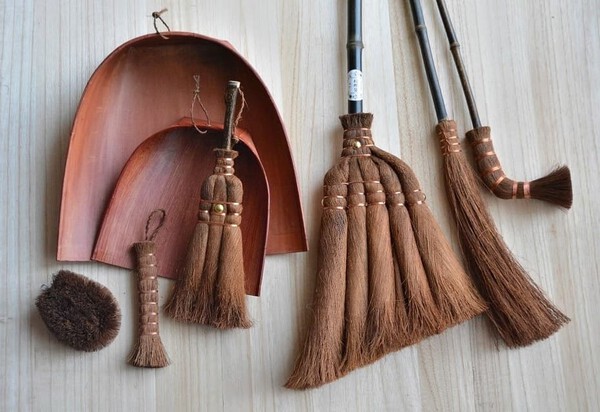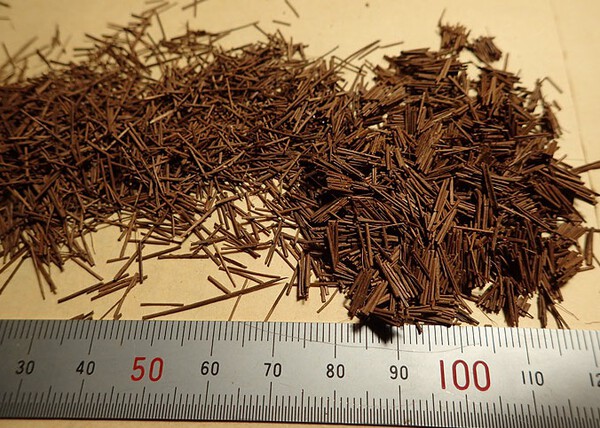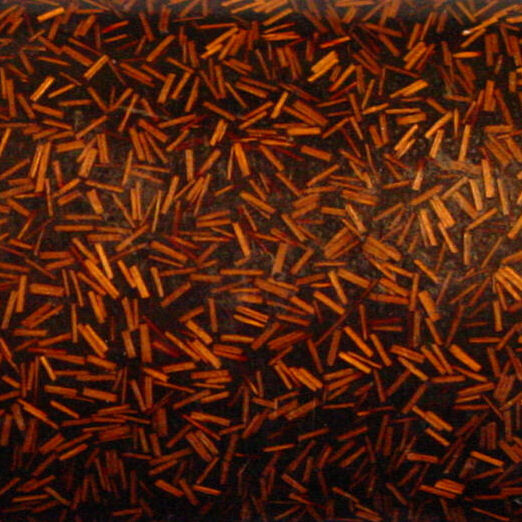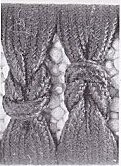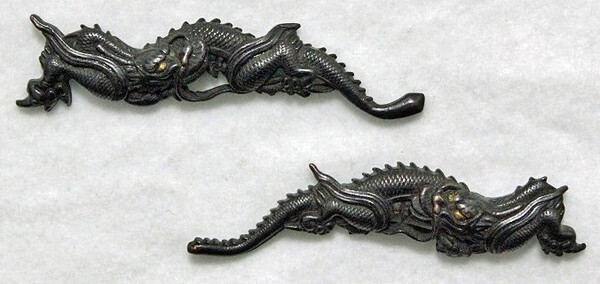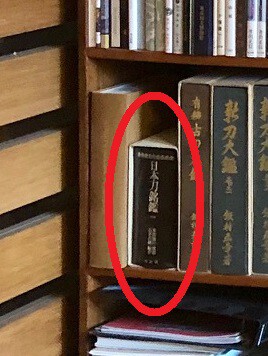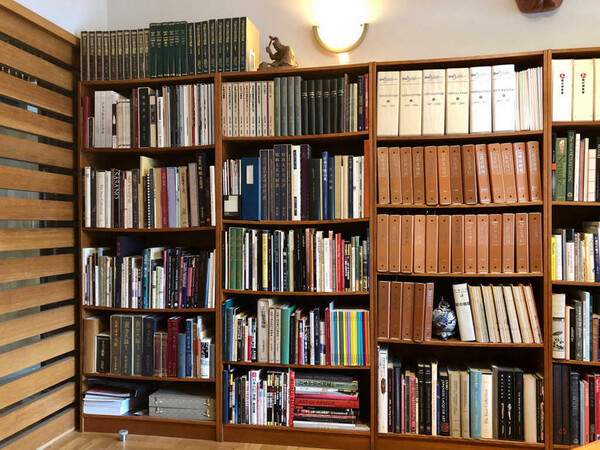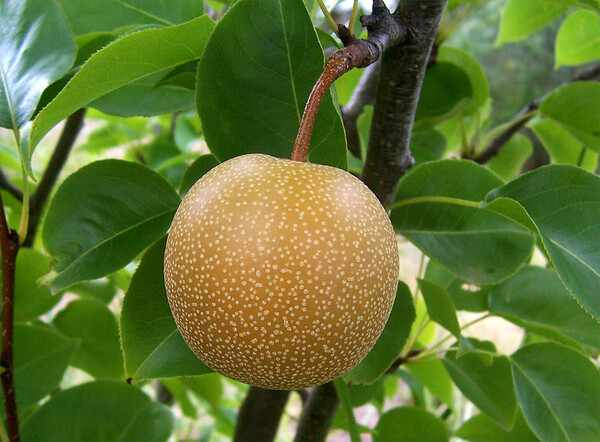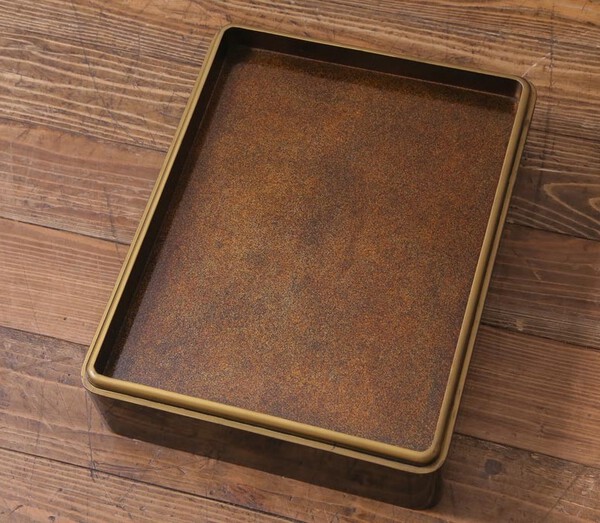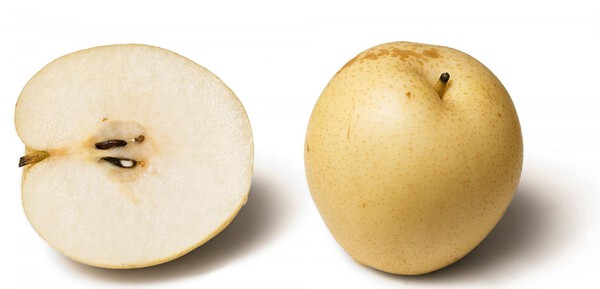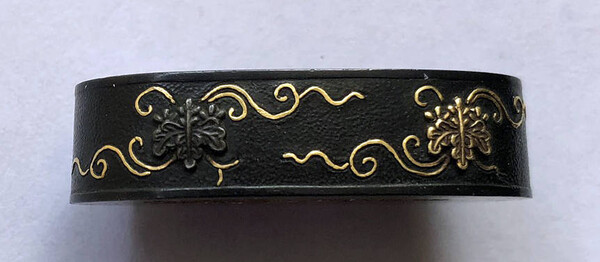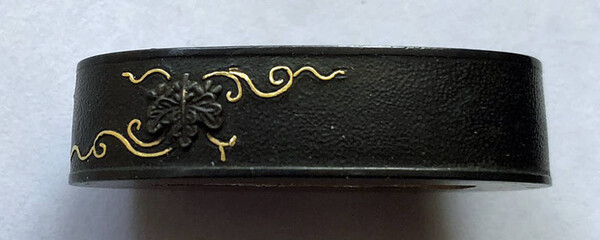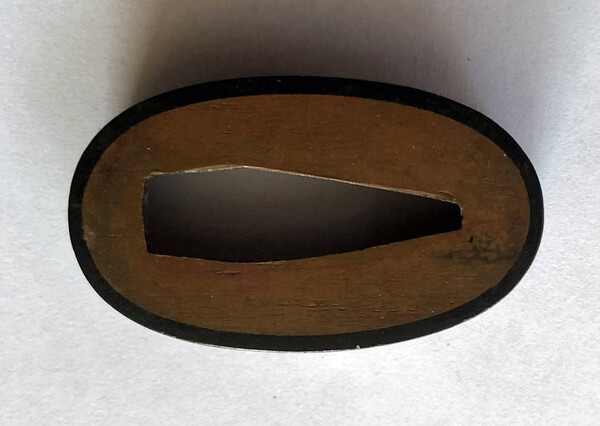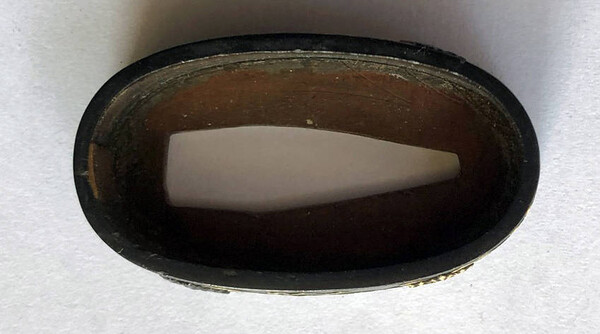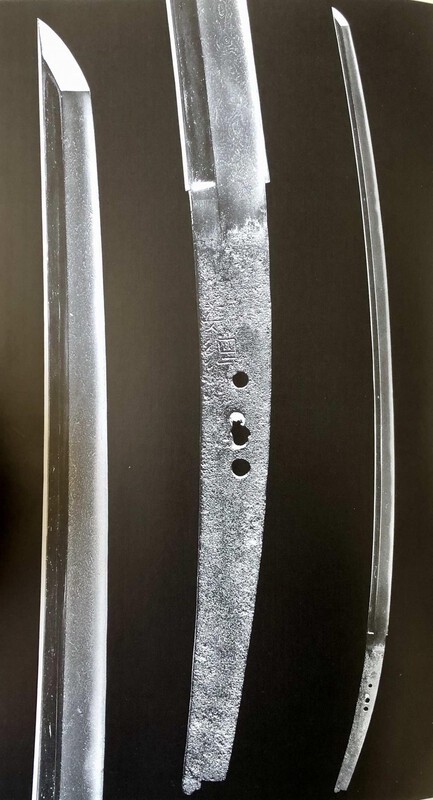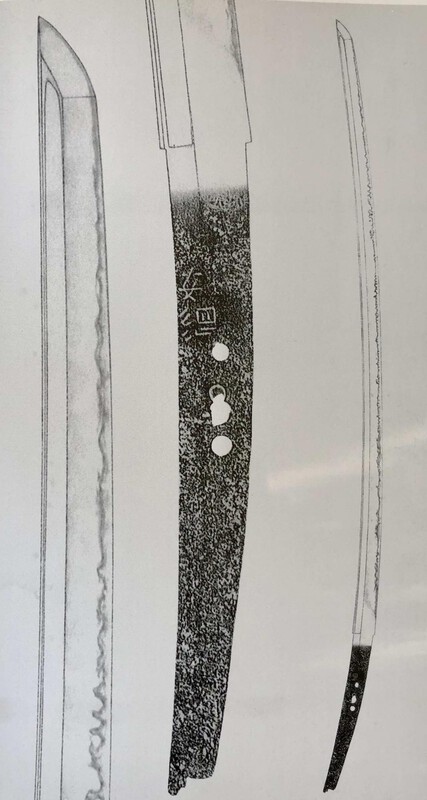-
Posts
3,242 -
Joined
-
Days Won
99
Content Type
Profiles
Forums
Events
Store
Downloads
Gallery
Everything posted by Guido
-
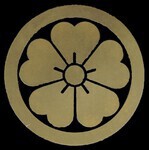
Saya finish - whats it called?
Guido replied to Barrie B's topic in General Nihonto Related Discussion
Nice find, Barrie! I have to admit that I haven't seen the exact same technique before. I think it's a variant of shuroge-nuri 棕櫚毛塗. Often referred to as "pine needle lacquer" in the West, it’s actually fan palm (shuro 棕櫚) fibers; pine needles would be too stiff and brittle to work with, and rot easily. The fan palm is very common in Japan, even in non-tropical areas; as a matter of fact, there’s one right in front of my apartment. The fibers are traditionally used for brooms and brushes. They are also chopped up, strewn into wet lacquer, and polished flat. Here’s a close-up of a saya of mine, shuroge-togidashi-nuri 棕櫚毛研出塗: I therefore would call your saya (tentatively) ishimeji shuroge oshidashi nuri 石目地棕櫚毛押出塗: “raised pattern palm fiber on stone surface lacquer”.- 14 replies
-
- 10
-

-
My favorite is akapuri = 赤坂プリンスホテル = Akasaka Prince Hotel
-
Just for clarification: when “spelling” 日 刀 保 it’s ni-tō-ho, but when spoken, the “t” kind of doubles, and it’s nit-tō-ho. I’m also quite anal when it comes to the use of macrons to indicate a long vowel: writing and/or pronouncing yūki (courage) yuki (snow) maybe harmless and even funny, but there are plenty of other Japanese words that sound almost the same, and using them in the wrong situation might confuse, disrespect, or even offend the person you are speaking to. This will most likely not happen on the NMB, but that's my story and I'm sticking to it.
-
In Japan it‘s abbreviated to Nittōho 日刀保, you hardly hear anybody using the full name.
-
Not that impressive: I just found out that 結玉 is actually pronounced "musubidama" . Anyhow, I don't really know how it's done, maybe this photo helps:
-
Shikagawa-tsumami-maki 鹿革撮み巻 with yuidama 結玉, often seen on Tenshō-koshirae 天正拵.
-

Please help me translate this document
Guido replied to antiquegallery's topic in Translation Assistance
Kunifusa - but knowing Ray, he probably just made a typo. -
So you’re looking for If you want to assemble themed tōsōgu, I recommend you start with the weakest link in the chain, fuchigashira; it’s not easy to get oversized ones, i.e. fuchi of more than 3.8 cm in length. Choosing common themes like a floral motif, dragons, or shishi, will enhance your chances of finding a matching set. I have these dragon menuki, shakudō with gold highlights: 70.4 mm and 69.5 mm respectively. Not exactly cheap at US$ 300.-, but a hard to find size.
-
That's a special box for polishers/maintanance.
-
If I read/understand Wah's post correctly, he's looking for katanabako, not katanadansu. https://www.katanatansu.jp/katanahako%E6%9C%83%E6%B4%A5%E6%A1%90%E5%88%80%E7%AE%B1/ http://www.namikawa-ltd.com/product/112
-
According to the Yahoo listing there was no bid, and it therefore remained unsold. However, I suspect all bids were canceled by the seller for not reaching the reserve, as Wah already mentioned.
-
FWIW: I can vouch for them, had two very smooth transactions so far - excellent communication and speedy shipping.
-
Here's my second Washida; a little different from the others in that it has no hira-zōgan or kebori. And I think it was no small feat of the maker to apply the tiny nanako on an iron ground - but Ford will know if it's a lot of work, or kind of a "yeah, do it all the times on rainy afternoons" thing.
- 35 replies
-
- 12
-

-
Bean-spilling-time : a 1:1 mix of boiled linseed oil and mineral spirits. Takes forever to dry, but darkens (and arrests) the rust, but makes the surface a little shiny. But please don't rush to make that magic formula yourself, once it's applied, it stays, at least for a couple of decades; AFAIK, there's no process to reverse the application.
-
Thanks for the link, Pete, that's actually my tsuba, I didn't know Tsurugi no Ya had it on their website! It came with the mentioned hozon papers, but I got it "upgraded" to tokubetsu hozon.
-
Information about the Washida-ha is rather sparse – the most I could find is written in Satō Kanzan’s 庄内金工名作集 Shōnai Kinkō Meisaku-shū; as John already mentioned, Washida was part of the Shōnai group. Besides the deep brown, dense iron, dote-mimi, and flush inlay, I forgot to mention another trait: the ura is very often treated as elaborately as the omote. Many Washida tsuba are unsigned. A prominent maker was 光中 Mitsunaka – however, Hagihara-sensei told me that the proper pronunciation of those kanji is "Kōchū". He was very prolific, and actually worked at many places. Here’s a tsuba of mine, signed Uzen Shōnai jū 羽前庄内住 Watanabe Kōchū 渡辺光中 + kaō in gold (tokuho). I have another Washida tsuba, but it’s mounted on a koshirae; I’ll take pics tomorrow.
-
The inlay being more or less flush with the surface, the dote-mimi, and color and texture of the iron indeed point to Washida. IMO a school that is quite underrated, I have seen some great tsuba with that attribution (and own one of them).
-

Show off your Nihonto book collection
Guido replied to bigjohnshea's topic in General Nihonto Related Discussion
-

Show off your Nihonto book collection
Guido replied to bigjohnshea's topic in General Nihonto Related Discussion
- 41 replies
-
- 11
-

-
-
The East Asian pear resembles more an apple in shape and bite than the “Western” pear; in Japan it’s called nashi, which is written 梨 or, more old fashioned, 梨子. If we follow the usual pattern (mokume-hada, ayasugi-hada, etc. [not mokume-jihada, ayasugi-jihada, etc.]), it should indeed be nashiji-hada 梨地*肌. Besides, there’s a lacquer technique that’s also called nashiji 梨地 - because of the same reason, i.e. resembling a pear, and the ji 地 is here certainly not part of jihada 地肌. Some books say nashiji resembles the skin of the pear, some say the flesh – there seems to be no consensus or definite answer. Take your pick:
-
Dave, most fuchi are in length between 37.5 and 38.5 mm – 32.25 mm is rather small; I therefore doubt that my fuchi will fit (we're looking at a 6.34 mm difference!), especially in regard to the “flow” of the mounting (the fuchi should be a tad smaller than the koiguchi, or same size at the most). What I do when looking at fittings online for mounting, and in doubt: I print it out to scale (in this case using the bottom view), cut it out, and place it on the koshirae. If you still think it might work, PM me your shipping address – if not, no harm done. And take your time, the fuchi won't go anywhere in the near future. Of course you could put together my fuchi and your kashira, sell it as a set, and buy a new set in the proper size from the profit made
-
I can’t help you with the menuki – but kiri-mon are not hard to find – however, I have a fuchi that seems to be a very close match. Dimensions are outside: 38.59 mm x 22.48 mm x 9.98 mm inside: 34.43 mm x 17.62 mm x 8.06 mm I paid US$ 65.- for it a while ago, and will sell for cost plus shipping (from Japan).
- 26 replies
-
- 12
-

-

Dojigiri
Guido replied to Bugyotsuji's topic in Sword Shows, Events, Community News and Legislation Issues
-

Dojigiri
Guido replied to Bugyotsuji's topic in Sword Shows, Events, Community News and Legislation Issues
Yes, Jacques, I think all of us understand by now that you are not able to see the bōshi. Don’t feel sad, some people take longer than others to get an eye for all the details in a Japanese sword. Keep studying, and maybe on day you’ll get there.



